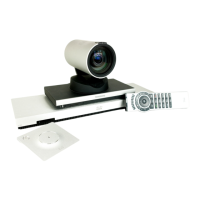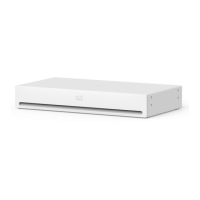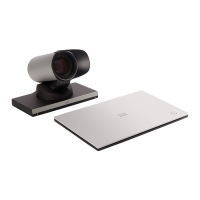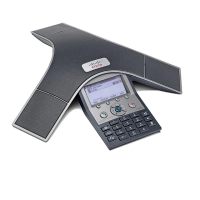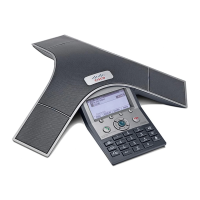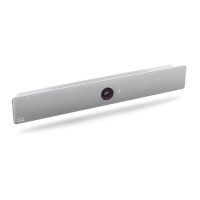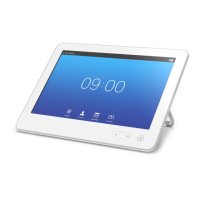16
D14582.15R1 (Rev.1 Nov 2013) User guide Prole Series, Codec C Series, Quick Set C20, SX20 Quick Set,
MX200, MX300. All contents are copyright © 2010–2013 Cisco Systems, Inc. Version TC6.2, 06.2013. English
Cisco TelePresence System Prole Series, Codec C Series, Quick Set C20, SX20 Quick Set, MX200, MX300 User guide
www.cisco.com
Video conferencing using an external MCU (with or without Multiway)
Any limitations
to the number
of simultaneous
participants will
depend entirely on
the conguration
implemented.
The maximum
number of
simultaneous
participants is four
(yourself included)
plus one audio-only
call.
Video conferencing using MultiSite (an equivalent to an embedded MCU)
Participants 2 and 3 experience this call as
a point-to-point call with an MCU. They will
therefore not need to have any conferencing
abilities built in.
Video conferencing—calling
more than one (optional)
Video calls can consist of either just two participants
(point-to-point calls) or several participants (video
conferences).
The ability to handle calls with several participants is
an optional feature that may, or may not, be present
in your video system or your video infrastructure. If in
doubt, consult your System Administrator.
Cisco video systems oer three ways of implementing
the ability to be in a call with more than one, viz:
• Multipoint Control Unit (MCU). This is a bridge
that interconnects calls from several sources. All
parties call the MCU unit, or the MCU unit can
also call the parties that are going to participate.
This means that all participants will be in a point-
to-point call with the MCU. If an MCU is used in
your oce, consult your System Administrator for
operating details.
• MultiSite, an optional built-in MCU in your video
system that allows you to call more than one.
The video systems that you call do not need to
have any conferencing capabilities. The maximum
number of participants will be four (yourself
included) plus one audio-only call.
• Multiway, an optional feature that transfers your
call to an external MCU as soon as you start calling
more than one. However, you do control it all
directly from your system. You will not have to call
the MCU and then do everything from there.
Participant 1
Participant 3
Participant 2
External
MCU
Participant 2
Participant 3
Point-to-point
Point-to-point
Point-to-point
Participant 1

